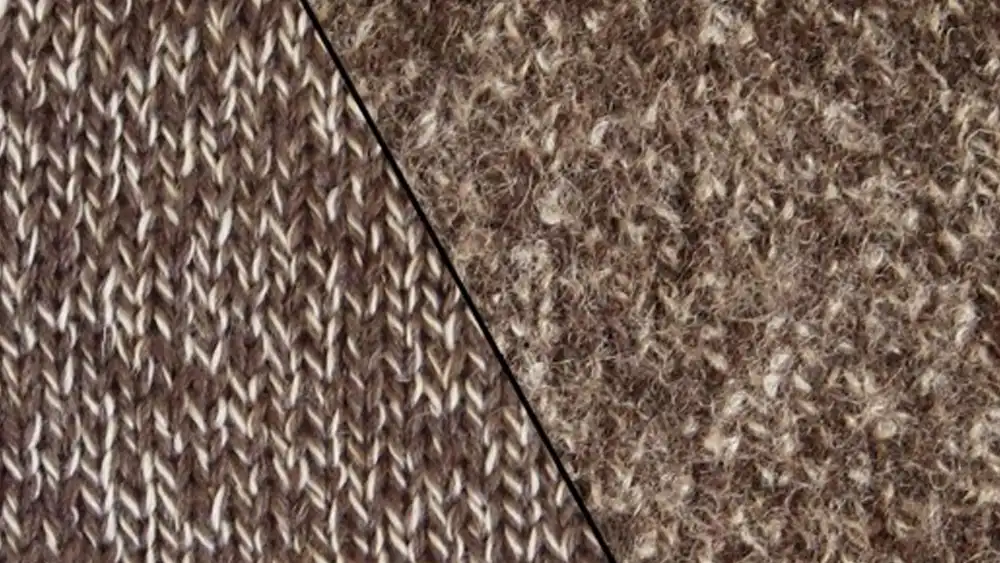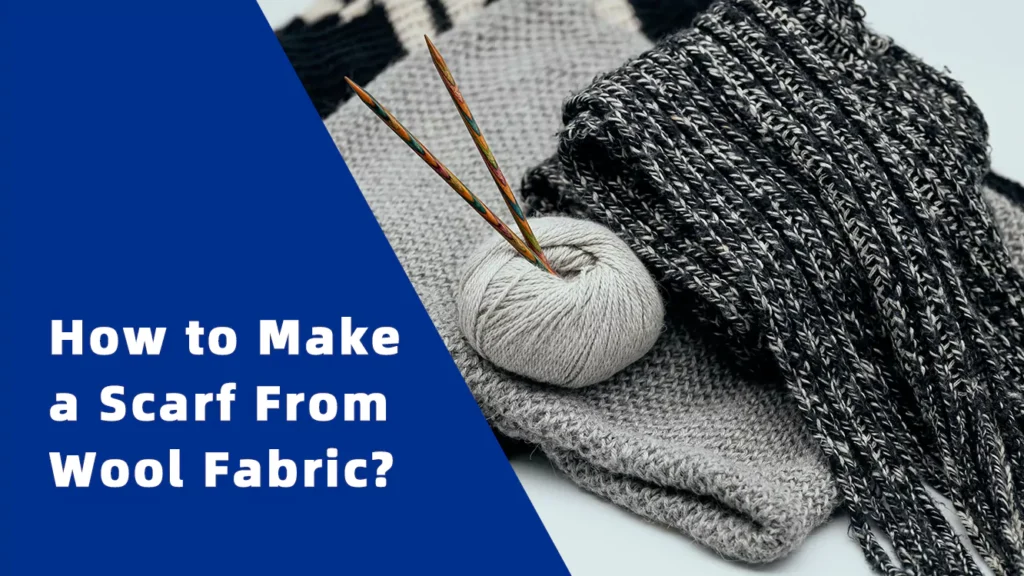Wool fabric has been cherished for centuries for its warmth, durability, and versatility. The process of transforming raw wool into fabric is fascinating and involves several steps.
How to Make Wool Fabric

Step 1: Shearing the Sheep
The production of wool begins with the careful shearing of wool-bearing animals, primarily sheep. This process is typically carried out in warmer months to minimize stress on the animals. Skilled shearers use specialized shears to ensure the sheep are not harmed while collecting high-quality fleece. Shearing not only provides the raw material but also helps promote the animals’ comfort and overall health.
Step 2: Cleaning and Scouring the Wool
Once shorn, the raw wool is transported to a cleaning facility. Here, it undergoes a thorough washing process to remove dirt, grease, and any remaining vegetable matter. The wool is immersed in hot water with mild detergents, ensuring that it is clean and ready for further processing. After washing, the wool is dried, which is crucial for preparing it for the next stages of production.
Step 3: Sorting the Wool
After cleaning, the wool is sorted into bales based on fiber quality, length, and color. This sorting step is essential, as different applications require varying grades of wool. Higher-quality fibers are set aside for premium products, while lower-quality wool may be designated for use in carpets or insulation materials. This meticulous sorting ensures that the right wool is used for its intended purpose.
Step 4: Carding the Wool
The sorted wool then undergoes carding, a process that involves untangling and aligning the fibers. Using mechanical rollers and brushes, the wool is transformed into long, continuous strands known as roving. This step is vital for preparing the wool for spinning, as it not only increases the uniformity of the fibers but also enhances the efficiency of the subsequent spinning process.
Step 5: Spinning the Wool
The carded strands are then spun into yarn. During this stage, the roving is twisted and stretched to create yarn of various thicknesses and textures. Spinning can be done by hand or with the aid of modern machines, allowing for consistent quality and strength in the yarn produced. Different spinning techniques can yield a diverse range of products to meet various market demands.
Step 6: Weaving the Wool
Finally, after a thorough washing to remove any residual oils, the spun yarn is woven into fabric. Various weaving techniques allow for the creation of a wide array of textiles, including garments, blankets, and other woolen products. Once woven, the fabric often undergoes dyeing and finishing processes to enhance its appearance and functionality. These processes ensure that the final products are not only aesthetically pleasing but also durable and suited to consumer needs.
How to Make Boiled Wool Fabric

Here’s a more detailed explanation of how to make boiled wool fabric:
Step 1. Start with Raw Wool:
The process of making boiled wool fabric begins with raw wool, typically sourced from sheep. The wool is sheared from the sheep’s fleece, leaving it in its natural state with lanolin intact.
Step 2. Cleaning and Scouring:
The raw wool is cleaned and scoured to remove dirt, grease, and impurities. This is usually done by washing the wool in hot water with detergent to ensure it’s thoroughly cleaned.
Step 3. Carding:
After cleaning, the wool undergoes carding, a process of combing the fibers to align them in the same direction. This creates a smooth, consistent texture and prepares the wool for spinning.
Step 4. Spinning:
Once carded, the wool is spun into yarn. This can be done using a spinning wheel or industrial spinning machines. The thickness and twist of the yarn can vary depending on the desired texture of the final fabric.
Step 5. Weaving or Knitting:
The spun yarn is then woven on a loom or knitted into fabric. For boiled wool fabric, the fabric is typically knitted to create a stretchy, dense material.
Step 6. Boiling Process:
The knitted wool fabric is then subjected to a boiling process, which is where the name “boiled wool” comes from. The fabric is immersed in hot water and agitated to shrink and felt the fibers.
Step 7. Felting:
Boiling causes the wool fibers to interlock and shrink, resulting in a dense, felted fabric. This process also helps to further clean the fabric and enhance its durability.
Step 8. Rinsing and Drying:
After boiling, the fabric is rinsed thoroughly to remove any excess soap or residue. It is then laid out flat to dry, either air-dried or with the assistance of heat.
Step 9. Finishing:
Once dry, the boiled wool fabric may undergo additional finishing processes to enhance its appearance and texture. This can include brushing to raise the nap, pressing to smooth out any wrinkles, or shearing to create a uniform surface.
Step 10. Final Inspection:
The finished boiled wool fabric is inspected for quality and consistency. Any imperfections or irregularities are addressed before the fabric is ready for use in garments or other textile products.
Making boiled wool fabric involves cleaning, carding, spinning, knitting or weaving, boiling, felting, rinsing, drying, finishing, and inspection. This process results in a dense, felted fabric that is warm, durable, and versatile, making it ideal for a variety of clothing and textile applications.
Things to Make With Wool Fabric

Here are some ideas for things what can make with wool fabric in following
- Scarves: Wool fabric is perfect for making cozy scarves to keep you warm during the colder months. You can choose from a variety of colors and patterns to suit your style.
- Hats: Whether you prefer beanies, berets, or wide-brimmed hats, wool fabric is an excellent choice for making stylish and functional headwear. Wool provides warmth and insulation, making it ideal for cold weather.
- Mittens or Gloves: Keep your hands warm and toasty with wool fabric mittens or gloves. Wool’s natural properties help to retain heat while wicking away moisture, keeping your hands dry and comfortable.
- Sweaters: Knit or sew your own sweaters using wool fabric for a cozy and classic wardrobe staple. You can customize the design and fit to create a one-of-a-kind garment that reflects your personal style.
- Blankets or Throws: Create snuggly blankets or throws for cuddling up on the couch or adding an extra layer of warmth to your bed. Wool fabric blankets are soft, durable, and perfect for chilly nights.
- Pillows: Add a touch of warmth and texture to your home decor with wool fabric pillows. You can mix and match different colors and patterns to create a cozy and inviting space.
- Coats or Jackets: Make your own outerwear using wool fabric for a timeless and sophisticated look. Wool coats and jackets are stylish, durable, and provide excellent insulation against the cold.
- Bags or Totes: Craft durable and stylish bags or totes using wool fabric for a chic and eco-friendly accessory. Wool’s natural resilience and strength make it ideal for carrying everyday essentials.
- Rugs: Create soft and plush rugs for your home using wool fabric. Wool rugs add warmth and comfort to any room, while also providing insulation and sound absorption.
- Craft Projects: Use wool fabric scraps for various craft projects such as appliqué, embroidery, or patchwork. Wool’s versatility and texture make it a popular choice for creative endeavors.
Whether you’re sewing, knitting, or crafting, wool fabric offers endless possibilities for creating beautiful and functional items for yourself or as thoughtful gifts for loved ones.
How to Make a Scarf From Wool Fabric

Step 1. Gather Materials:
- Wool fabric (previously made or purchased)
- Measuring tape
- Fabric scissors
- Sewing machine or needle and thread
- Pins
- Optional: Embellishments such as fringe or decorative trim
Step 2. Prepare the Fabric:
Lay out your wool fabric on a flat surface.
Use a measuring tape and fabric scissors to cut the fabric to your desired scarf size. Standard scarf dimensions are typically around 60 inches long and 8-10 inches wide, but you can adjust according to your preference.
Step 3. Hem the Edges (Optional):
If your fabric has raw edges, you may want to hem them for a polished finish. Fold the edges over about 1/4 inch and press with an iron to create a clean edge. Then, fold the edges over again and stitch in place using a sewing machine or needle and thread.
Step 4. Add Embellishments (Optional):
If desired, you can add embellishments to your scarf such as fringe or decorative trim. Attach these to the ends of the scarf using a sewing machine or by hand stitching.
Step 5. Sew the Seams (Optional):
If you prefer a more finished look, you can sew the two long edges of the scarf together to create a seamless tube. Place the fabric right sides together and pin along the edges. Then, sew a straight stitch along the pinned edge, leaving a small opening for turning.
Step 6. Turn and Press:
Turn the scarf right side out through the opening (if applicable) and use a pointed object such as a chopstick or knitting needle to gently push out the corners. Press the scarf with an iron to smooth out any wrinkles and create crisp edges.
Step 7. Final Touches:
Give your scarf a final press with the iron to ensure it lays flat and looks professional. Trim any loose threads, and your wool fabric scarf is ready to wear!
Step 8. Enjoy Your Handmade Scarf:
Wrap your cozy wool fabric scarf around your neck and enjoy the warmth and style it brings to your outfit. Whether you made it for yourself or as a gift for a loved one, your handmade scarf is sure to be cherished for years to come.
Conclusion
Creating wool fabric is an intricate process that combines traditional techniques with modern technology. From shearing to finishing, each step is crucial in producing high-quality wool fabric. Whether for clothing, upholstery, or other uses, wool fabric continues to be a timeless and valuable material.
